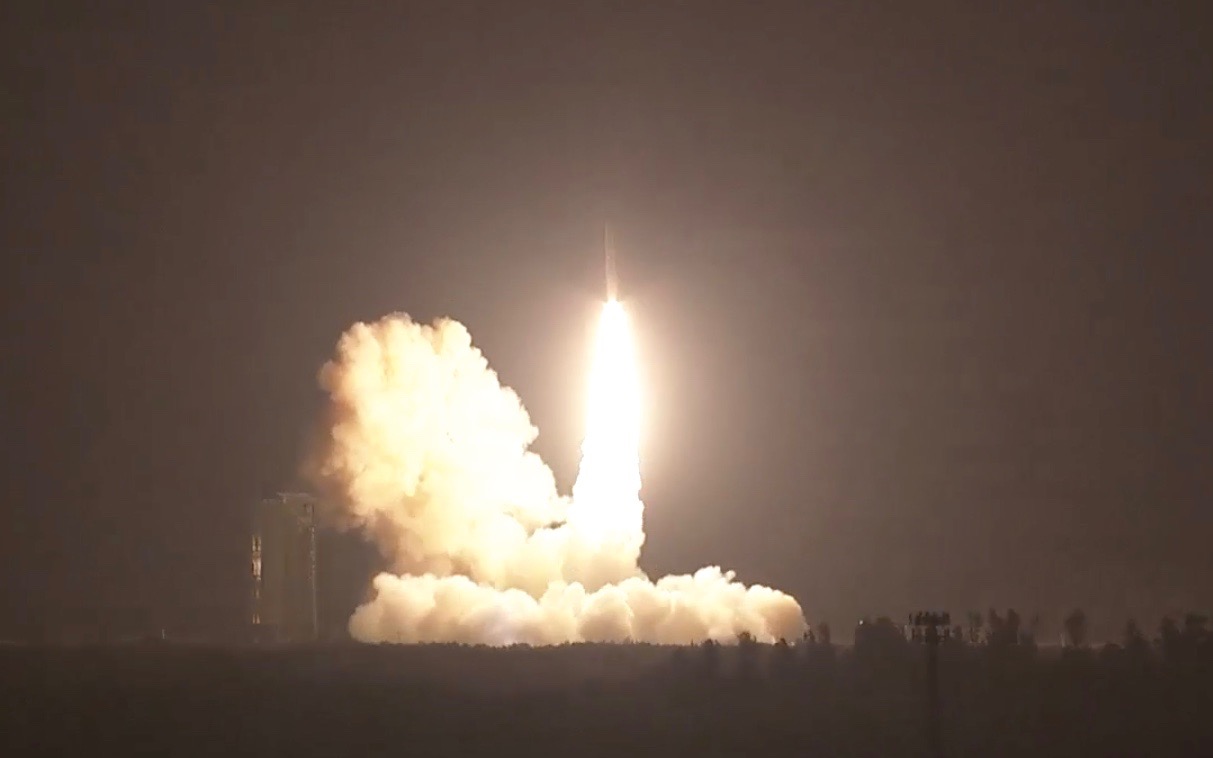
A satellite designed to help the U.S. military keep tabs on the ever-growing population of orbiting objects took to the skies atop a converted missile early this morning (Aug. 26).
The Air Force's Operationally Responsive Space-5 (ORS-5) satellite lifted off from Florida's Cape Canaveral Air Force Station at 2:04 a.m. EDT today (0604 GMT) atop an Orbital ATK Minotaur IV rocket, which carved a fiery orange arc into the sky as it rose.
If everything goes according to plan, ORS-5 will settle into a circular orbit 372 miles (600 kilometers) over the equator. From this vantage point, the 310-lb. (140 kilograms) satellite will scan the geosynchronous belt, a region about 22,300 miles (35,800 km) up that harbors many valuable communications and weather satellites, both government and commercial.
Geosynchronous orbit is an appealing destination for such craft because objects there orbit at the same speed that Earth rotates, allowing satellites to hover over the same patch of Earth 24/7.
ORS-5, which is also known as SensorSat, will monitor the satellites and space junk in the geosynchronous belt "to aid the U.S. military’s space situational awareness," Orbital ATK representatives wrote in a statement. And it will do this on the relative cheap: ORS-5 was developed and launched for less than $100 million, Col. Shahnaz Punjani, director of the Air Force's Operationally Responsive Space office, said during Orbital ATK's launch webcast this morning.
ORS-5 was designed and built by the Massachusetts Institute of Technology’s Lincoln Laboratory.
The first three stages of the Minotaur IV rocket are derived from decommissioned Peacekeeper intercontinental ballistic missiles. These three are usually topped by a single Orion 38 stage (which is built by Orbital ATK); however, the Minotaur IV that lifted off this morning featured two Orion 38s. The extra one was required to steer ORS-5 to its equatorial perch, Orbital ATK representatives said.
Get the Space.com Newsletter
Breaking space news, the latest updates on rocket launches, skywatching events and more!
This morning's launch was the sixth for the Minotaur IV and the 26th overall for the Minotaur rocket family, which also includes the flight-proven Minotaur I, II and V vehicles.
The ORS-5 launch was the first of a Minotaur rocket from Cape Canaveral; all of the previous Minotaur liftoffs occurred from pads in California, Virginia or Alaska.
Follow Mike Wall on Twitter @michaeldwall and Google+. Follow us @Spacedotcom, Facebook or Google+. Originally published on Space.com.
Join our Space Forums to keep talking space on the latest missions, night sky and more! And if you have a news tip, correction or comment, let us know at: community@space.com.

Michael Wall is a Senior Space Writer with Space.com and joined the team in 2010. He primarily covers exoplanets, spaceflight and military space, but has been known to dabble in the space art beat. His book about the search for alien life, "Out There," was published on Nov. 13, 2018. Before becoming a science writer, Michael worked as a herpetologist and wildlife biologist. He has a Ph.D. in evolutionary biology from the University of Sydney, Australia, a bachelor's degree from the University of Arizona, and a graduate certificate in science writing from the University of California, Santa Cruz. To find out what his latest project is, you can follow Michael on Twitter.









